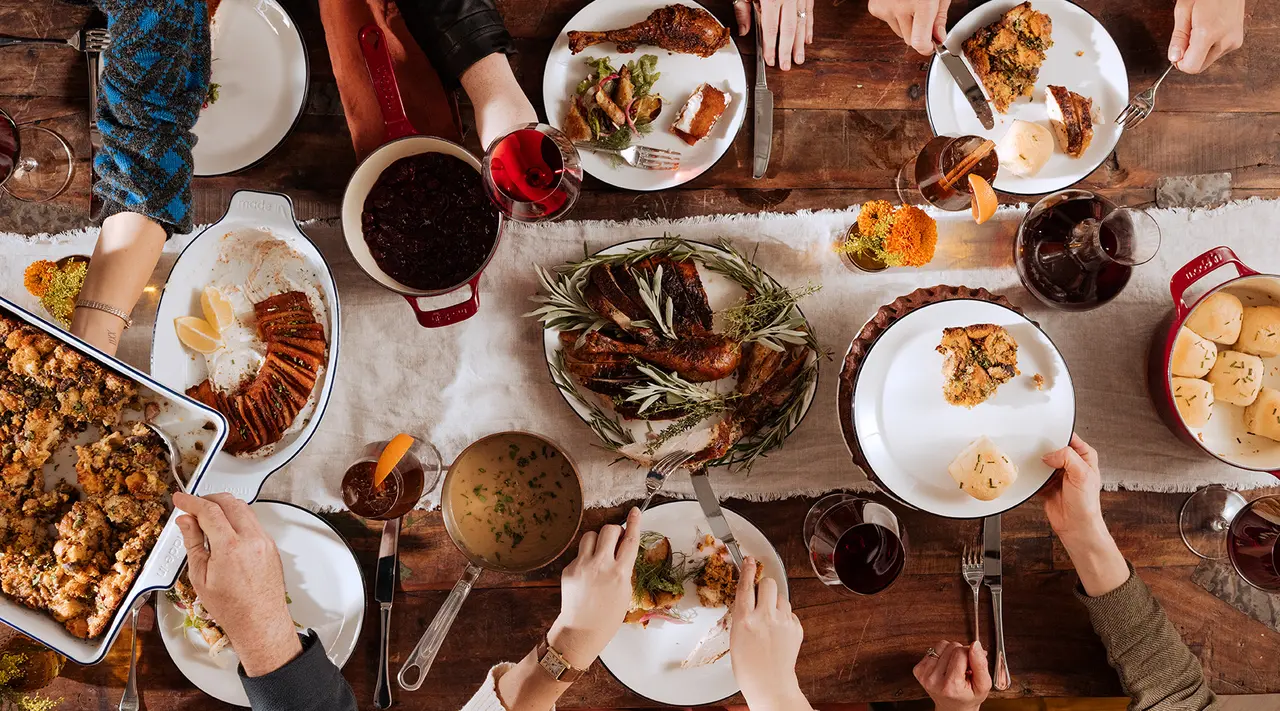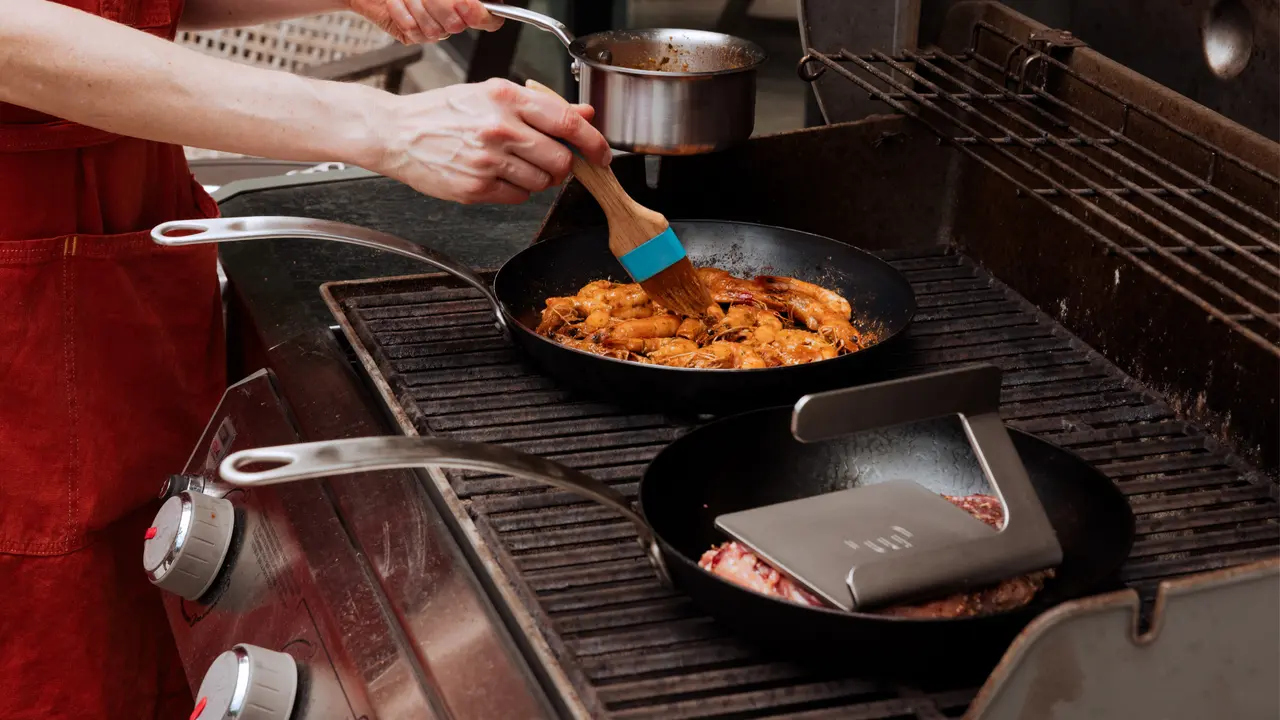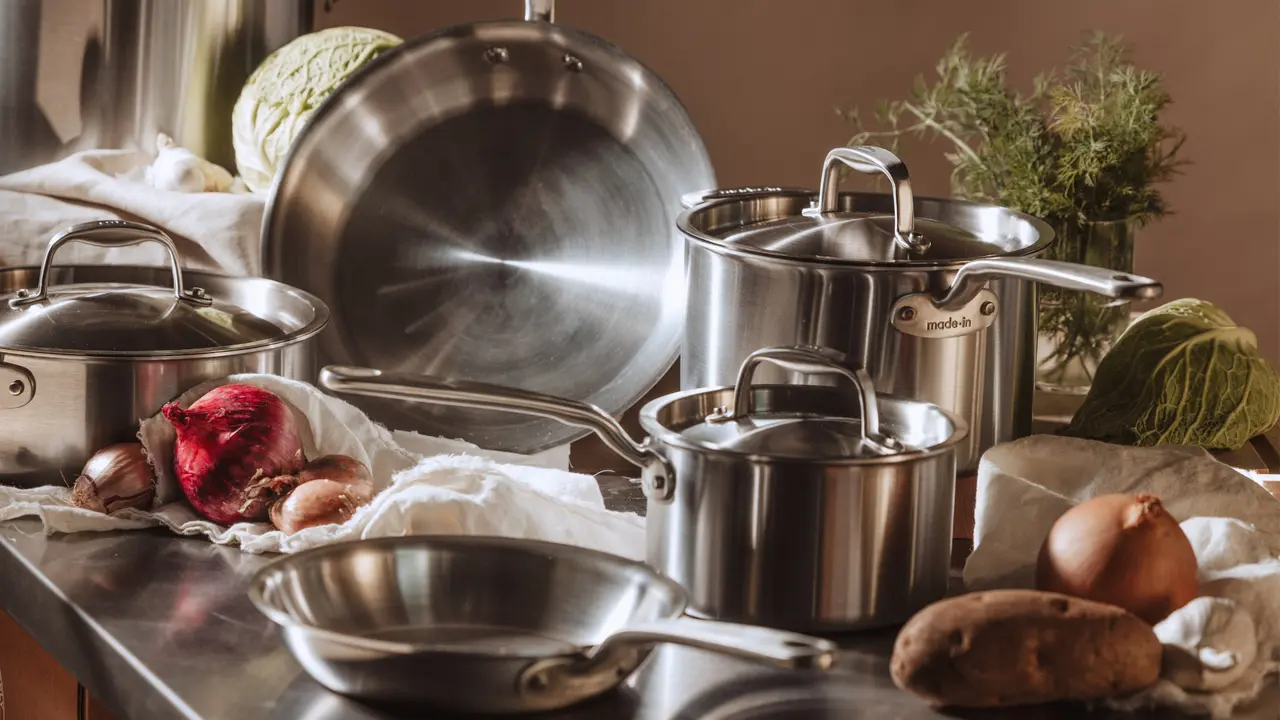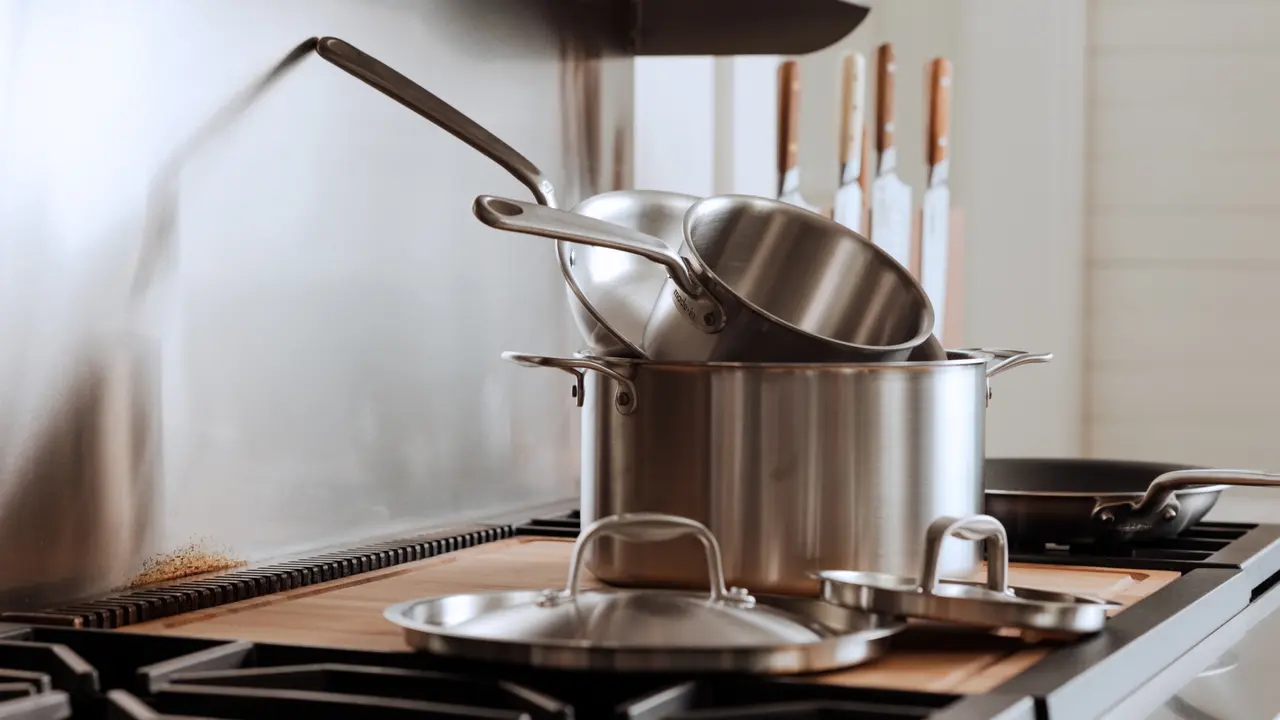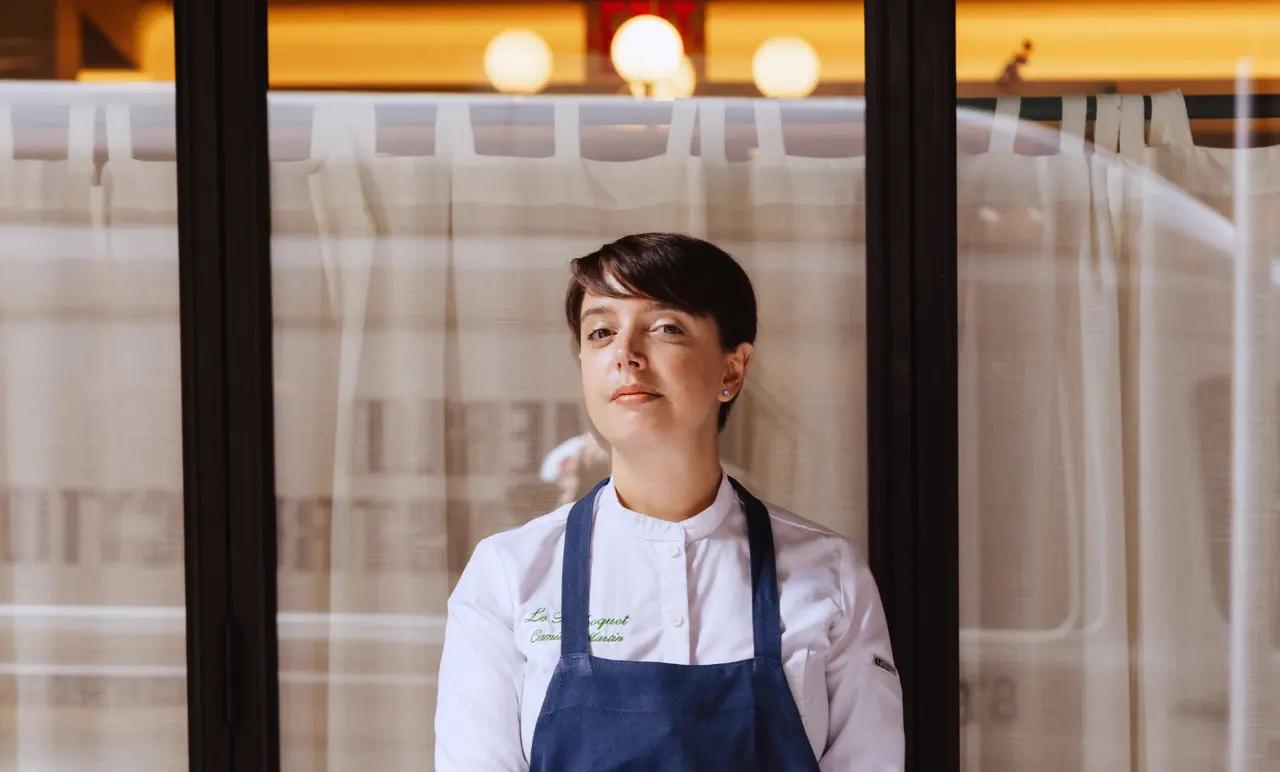Making the meal is one thing, but serving it like Ina is an art form. Fortunately, it begins with a few simple best practices that you can adopt almost immediately. Below, we’re sharing how to plate food and design a beautiful table for your next dinner party or holiday meal.
Tip #1: Make Your Centerpiece a Masterpiece
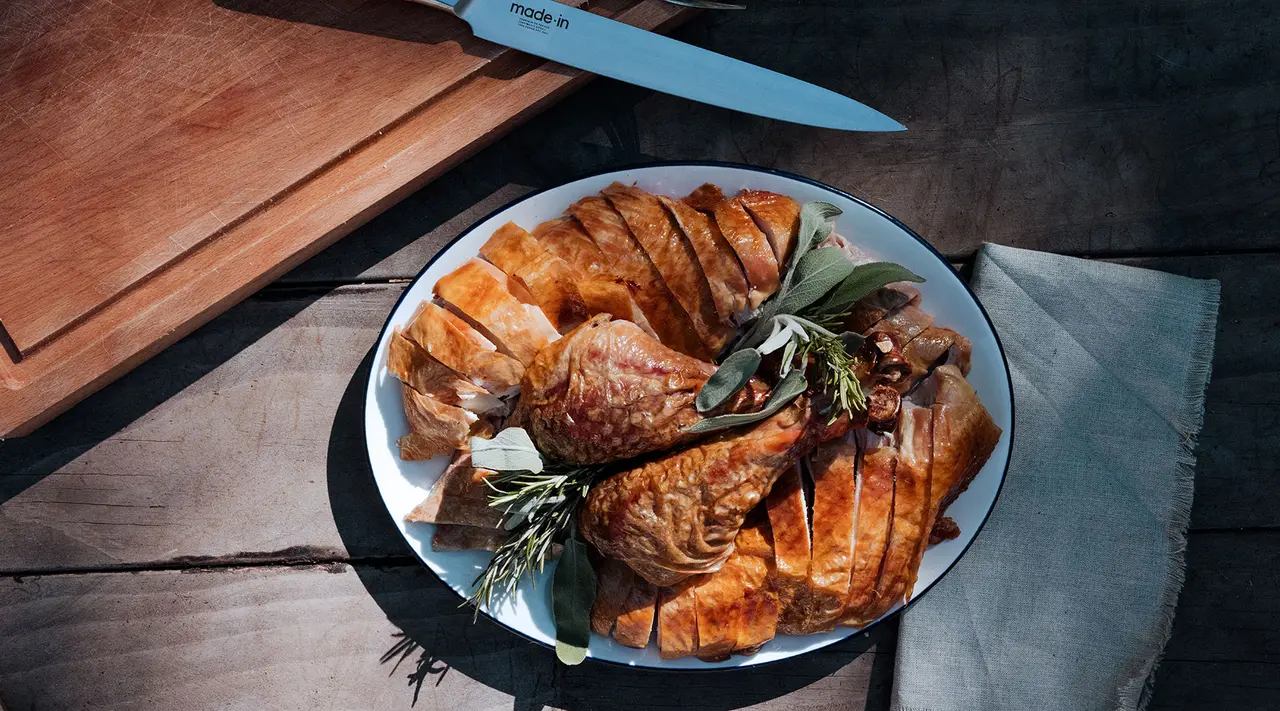
While individually plated dishes can be works of art, and buffet-style meals are more efficient and less messy, the most beautiful and bountiful meals are served family style. Around the holidays, the Rockwellian centerpieces of these meals are obvious: a roast turkey, a holiday honey-glazed ham, or some equally dramatic but vegetarian-friendly offering.
With clear showstoppers like these, it’s easy to make them stand out on your table. A properly carved turkey or an artfully styled rack of lamb needs little more than an elegant but understated serveware. With statement mains, the service dishes should accentuate the dish, without competing with it. Our go-to for this is the English-made Serving Platter, crafted from sturdy bone-white china that’s as timeless as it is durable.
For less formal dinner parties with more casual main courses, presenting them on serveware of varying sizes, shapes, and colors will also create an elegant overall look. Plate pasta dishes in the Serving Bowl, garnishing them with ingredients that hint at the dish and echo the contrast of the serveware. Rather than relying on a single centerpiece, bountiful and intentional contrast creates a distinct but still cohesive feel.
Tip #2: Consider Color
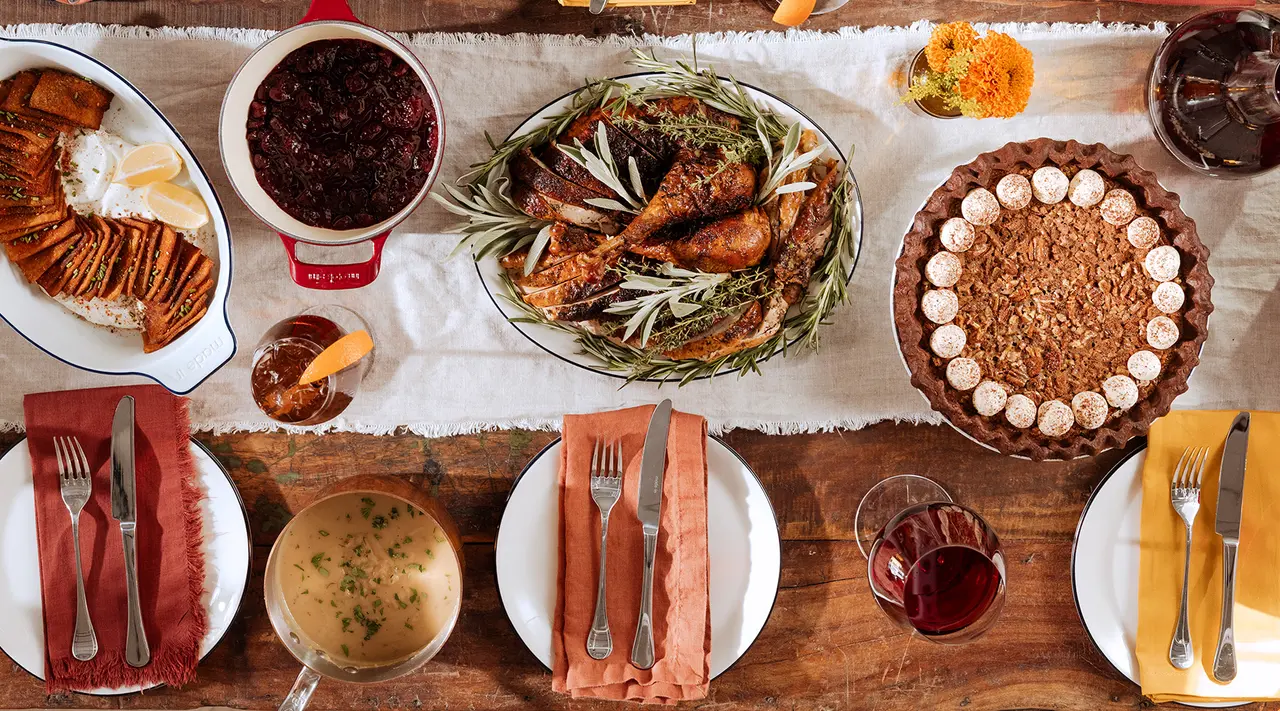
The old adage “you eat with your eyes first” has been scientifically proven—visual cues like color, sheen, and shape alter our perception of flavor, so it’s important to keep those cues in mind when designing a dinner table meant to entice the appetite. In gardening, this is called “color echoes.” By repeating color (or shape, or texture), garden designers present a clear path that draws your eye along and through a landscape. The same can be done with your table.
Especially with low-contrast holiday meals like Thanksgiving—which tend to come in various shades of beige—playing with and repeating various hues will impart an inviting visual harmony. This could look like introducing orange, brown, and cream shades that emphasize the rich warm tones of the dishes on the table.
Adding complementary colors will also introduce more dimension and unity. An easy way to find these accent colors is to refer to a color wheel. Input the colors of the food you’re making, and try to use corresponding colors for Plateware, decor, and linens.
Tip #3: Mix and Match Serveware
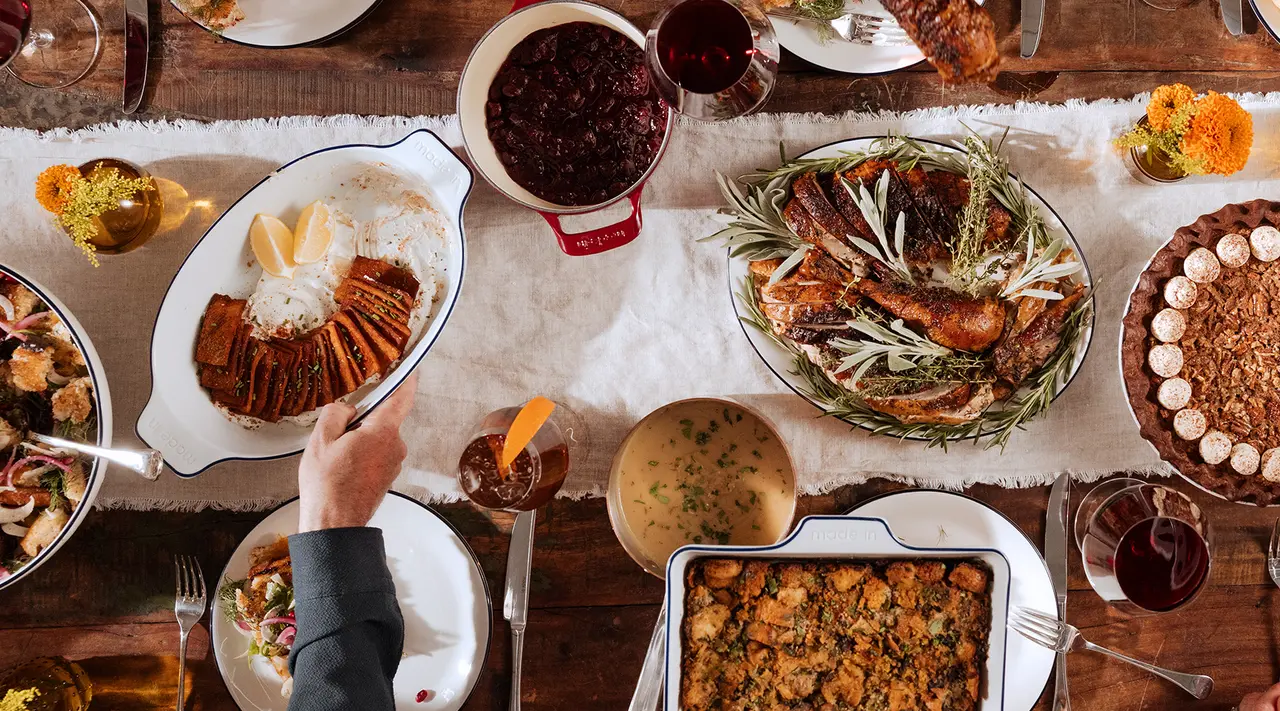
Aesthetically, using a complete dinner service that includes both dinnerware and serveware contributes a feeling of formality and grandiosity—sometimes, this is exactly what we’re going for. More frequently, however, we’re balancing a desire to minimize cleanup and avoid lugging fancy heirloom dinnerware out of the attic.
For this reason, it’s almost always a good idea to mix and match serveware. Repeating the same pieces, especially muted ones, comes across as bland. Investing in quality cookware and bakeware that’s both functional and attractive means you can serve some dishes in the vessel they were prepared in.
Serving in statement pieces like the Chef Nancy Silverton Bakeware or one of the hues of our Dutch Oven helps to not only break up the monotony, but serving in the same dish it's cooked in saves you time when it comes to cleanup.
Tip #4: Introduce Textural Contrast

Even properly set tables can feel flat, especially during holiday meals where the menu is one-note—lots of baked things, usually brown, with vegetables so thoroughly cooked that any color has become muted.
To combat this, introducing texture through linens, decor, and florals helps, but the biggest factor is the actual menu. Take lessons on texture and color from our 2nd annual Thanksgiving menu through side dishes like Chef Karen Akunowicz's Fennel Panzanella Salad, a verdant, zesty take on a traditional panzanella topped with bright pomegranate arils; and Albi's Spicy Potatoes from Chef Michael Rafidi, featuring two kinds of Spanish paprika for both color and kick.
Texture can be introduced through garnish as well—a drizzle of olive oil, a sprinkle of flaky salt, or a scattering of fresh herbs adds more dimension. When plating, busy and statement dishes should be offset with simple serveware that underscores the food’s natural beauty.
Tip #5: Make Dessert an Encore
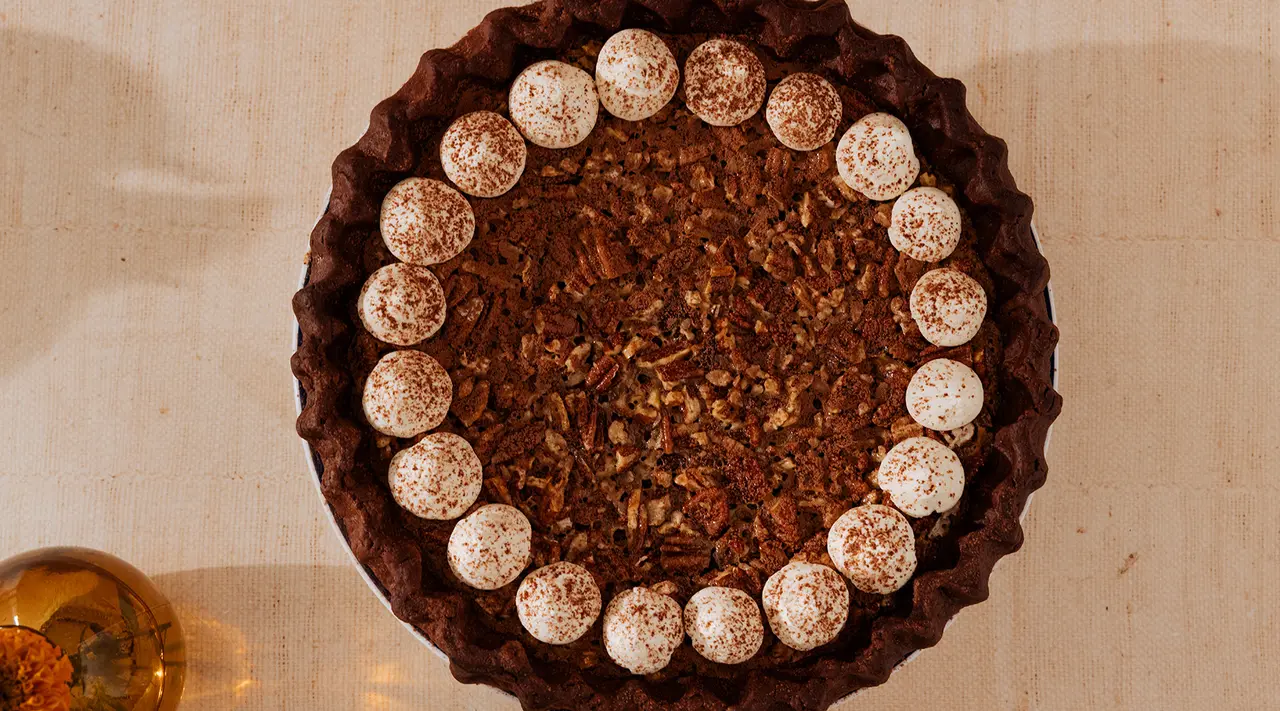
Just when your guests thought the showmanship was over, bring out the final act: dessert. The holidays practically beg for pie, and Chef Amanda Rockman's Chocolate Rye Pecan iteration is one that equally shows off your hosting and baking prowess.
After dinner, clear the table, start a pot of coffee, and let guests settle down into comfortable conversation. When everyone has had some time to digest, bring out your show stopping dessert for tableside service and let the compliments roll in. If you’re lucky, you can enlist someone else to manage the rest of the dishes.
Ready to Cook?
Now that you know the principles to table design and plating, you’re ready to host a beautiful dinner party or holiday meal. All you need to do is select your blank canvas (i.e. Dinnerware), set a menu, and invite a few guests.
